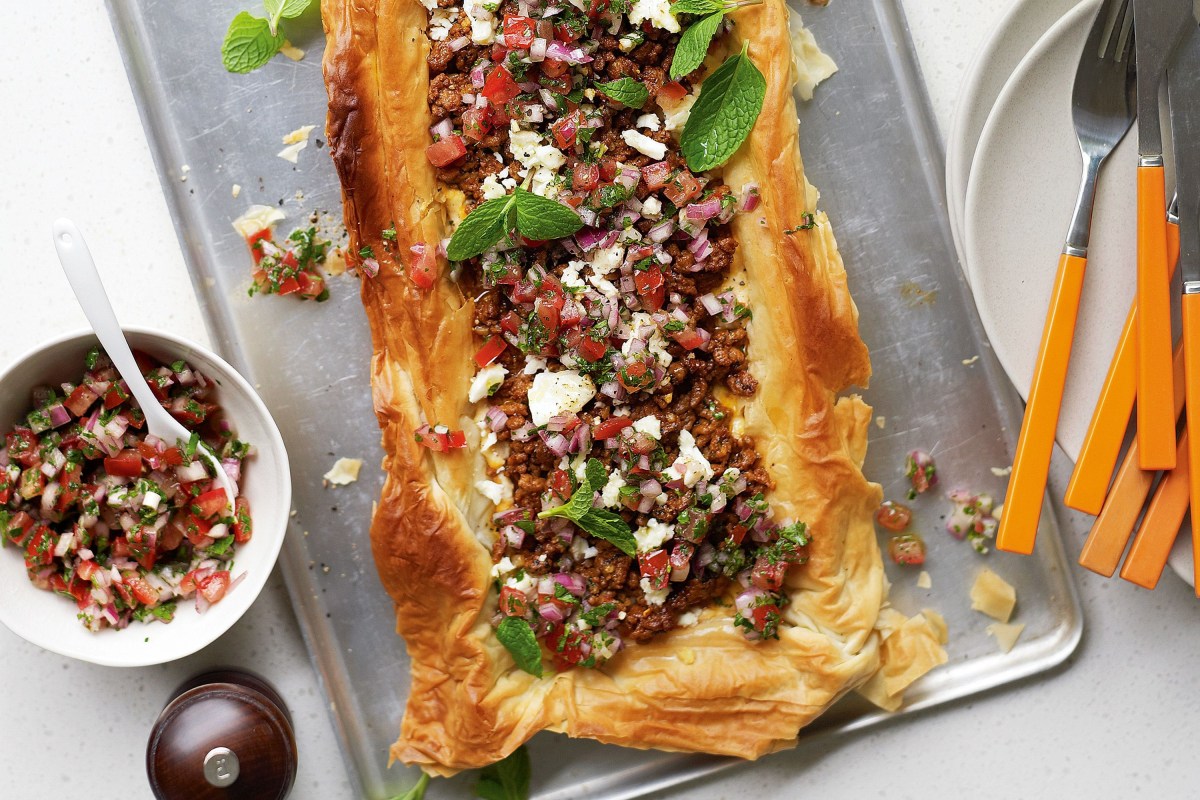Embark on a culinary journey where the vibrant tapestry of Middle Eastern flavors meets the principles of the Banting diet. Discover how to adapt beloved traditional dishes, rich in spices and aromatic herbs, into delicious, low-carbohydrate meals that satisfy both your palate and your health goals. This exploration unveils the secrets to transforming classic recipes, substituting ingredients cleverly, and maintaining the authenticity of Middle Eastern cuisine while embracing a Banting lifestyle.
We’ll delve into the art of creating Banting-friendly spice blends, exploring the unique flavor profiles that define Middle Eastern cooking. Learn to identify suitable low-carb alternatives for traditional ingredients, ensuring that your adapted dishes retain their visual appeal and enticing textures. From succulent lamb tagines to flavorful vegetable stews, we’ll guide you through the process, offering detailed recipes and step-by-step instructions to ensure your success in crafting these exotic and healthy meals.
Popular Middle Eastern Banting Dishes
Embracing the principles of the Banting diet—low carbohydrate, high fat—doesn’t mean sacrificing the vibrant flavors of Middle Eastern cuisine. Many traditional dishes can be easily adapted to fit this dietary approach, resulting in meals that are both delicious and health-conscious. By focusing on healthy fats, lean proteins, and low-carb vegetables, we can create satisfying and flavorful Banting-friendly versions of beloved Middle Eastern classics.
Several popular Middle Eastern dishes lend themselves well to Banting adaptations. The key is substituting high-carbohydrate ingredients like rice, bulgur, and certain breads with low-carb alternatives. This allows us to retain the authentic taste profiles while aligning with the dietary guidelines.
Banting-Adapted Middle Eastern Dishes
The following list showcases five popular Middle Eastern dishes and their Banting-friendly adaptations. Each adaptation prioritizes maintaining the core flavors and textures while minimizing carbohydrate intake.
- Chicken Shawarma with Cauliflower Rice: Traditional shawarma uses pita bread, which is high in carbohydrates. The Banting adaptation replaces the pita with cauliflower rice, maintaining the tender, flavorful chicken and vibrant spices. The texture is lighter and fluffier than the original, offering a unique culinary experience.
- Baba Ghanoush with Zucchini Noodles: Instead of serving this creamy eggplant dip with pita bread, zucchini noodles provide a low-carb alternative. The rich, smoky flavor of the baba ghanoush remains unchanged, complemented by the slightly firm yet tender texture of the zucchini noodles.
- Lamb Kofta with Roasted Vegetables: This classic dish is easily adapted by replacing any accompanying bread or rice with a generous serving of roasted vegetables like eggplant, bell peppers, and zucchini. The lamb koftas, seasoned with aromatic spices, offer a juicy and flavorful centerpiece to the meal. The vegetables provide a sweet and savory counterpoint to the rich lamb.
- Chicken Tagine with Cauliflower Mash: Traditional tagines often include couscous or other grains. In the Banting version, cauliflower mash provides a creamy, comforting alternative. The tender chicken, infused with warming spices and slow-cooked to perfection, maintains its characteristic rich flavor. The cauliflower mash offers a smooth, subtly sweet texture that complements the savory tagine.
- Lebanese Salad with Avocado: This refreshing salad typically includes pita bread. The Banting adaptation omits the bread and incorporates avocado for healthy fats and creaminess. The vibrant flavors of fresh herbs, tomatoes, cucumbers, and lemon juice remain, creating a light yet satisfying salad. The avocado adds a rich, buttery texture and enhances the overall creaminess.
Detailed Recipe: Banting Chicken Shawarma with Cauliflower Rice
This recipe provides a step-by-step guide for preparing a delicious and healthy Banting-friendly Chicken Shawarma with Cauliflower Rice. The result is a flavorful and satisfying meal that adheres to the principles of the Banting diet.
- Prepare the Chicken: Marinate 1.5 lbs boneless, skinless chicken breasts in a mixture of 2 tbsp olive oil, 1 tbsp lemon juice, 1 tsp ground cumin, 1 tsp paprika, ½ tsp garlic powder, ½ tsp cinnamon, and salt and pepper to taste. Marinate for at least 30 minutes, or preferably overnight in the refrigerator.
- Cook the Chicken: Skewer the marinated chicken and grill, bake, or pan-fry until cooked through. Alternatively, shred the chicken after cooking for a more traditional shawarma-like texture.
- Make the Cauliflower Rice: Pulse 1 large head of cauliflower in a food processor until it resembles rice. Sauté the cauliflower rice in 1 tbsp olive oil until tender-crisp.
- Assemble the Shawarma: Serve the cooked chicken over the cauliflower rice. Garnish with chopped fresh parsley, a dollop of plain Greek yogurt (optional), and a squeeze of fresh lemon juice.
Spice Blends and Flavor Profiles
The vibrant tapestry of Middle Eastern cuisine is inextricably woven with the rich threads of its spice blends. These aren’t mere additions; they are the architects of flavor, transforming simple ingredients into complex and unforgettable dishes. The artful use of spices, carefully balanced and layered, creates the characteristic aromatic depth and complexity that defines the region’s culinary heritage. Understanding the role of these spices is key to successfully adapting traditional recipes to the Banting lifestyle.
Spices in Middle Eastern cooking serve far more than just a culinary purpose; they often hold symbolic and medicinal significance, passed down through generations. Their pungent aromas and diverse flavor profiles – from warm and earthy to bright and citrusy – are essential in creating the unique character of each dish. The interplay of sweet, sour, salty, bitter, and umami is meticulously considered, reflecting a deep understanding of flavor harmony. Adapting these recipes to Banting requires mindful substitutions to maintain both the nutritional profile and the authentic flavor experience.
Three Unique Middle Eastern Spice Blends and Banting-Friendly Substitutions
Many traditional Middle Eastern spice blends incorporate ingredients that are not Banting-friendly, such as dried fruits or grains. However, with careful substitutions, the essence of these blends can be preserved while adhering to the dietary principles.
- Ras el Hanout: This Moroccan blend typically contains a dazzling array of spices, including cinnamon, ginger, cloves, cardamom, turmeric, cumin, coriander, and black pepper. For a Banting adaptation, simply omit any added sugars or starches that may be present in some commercial versions. Focus on the core spices to maintain the warm, complex flavor profile.
- Baharat: A versatile blend common across the Middle East, Baharat usually includes black pepper, cardamom, cumin, coriander, and cloves. This blend readily lends itself to Banting, as it already consists primarily of spices. Ensure you are using a version without added sugars or starches.
- Za’atar: This ubiquitous Levantine spice blend traditionally contains thyme, oregano, sesame seeds, and sumac. For a Banting-friendly version, reduce or omit the sesame seeds, which are high in carbohydrates. The thyme, oregano, and sumac will still provide the characteristic earthy, lemony flavor.
Creating a Custom Banting-Friendly Middle Eastern Spice Blend
The beauty of Middle Eastern spices lies in their versatility. Experimentation is encouraged! Start with a base of spices that create the desired flavor profile – perhaps cumin, coriander, and turmeric for a warm, earthy base, or paprika, cinnamon, and ginger for a sweeter, spicier note. Then, add other spices to enhance the flavor complexity. For example, a pinch of cayenne pepper can add a touch of heat, while a sprinkle of saffron can introduce a luxurious, floral note. Remember to taste and adjust as you go, aiming for a balanced blend that complements the other flavors in your dish. A visual representation of this process could be a color wheel, where each spice represents a color and its intensity represents the amount used, creating a vibrant, balanced blend.
Balancing Flavors in Banting Middle Eastern Recipes
The success of any Banting recipe, especially those inspired by Middle Eastern cuisine, hinges on achieving a harmonious balance of flavors. The absence of certain carbohydrates requires a careful adjustment of the other flavor components to compensate. For instance, if you’re reducing or omitting sugars, you might need to enhance the savory notes with additional spices or herbs. Similarly, the addition of healthy fats, such as coconut oil or olive oil, can contribute to the richness and texture of the dish, providing a satisfying mouthfeel without relying on carbohydrates. Consider the interplay of sweet, sour, salty, bitter, and umami; achieving a balance between these flavor profiles is crucial for creating an authentic and delicious Banting Middle Eastern meal. Think of it as a symphony of flavors, where each spice plays its part in creating a harmonious whole.
Suitable Ingredients and Substitutions

Embarking on a Banting-friendly Middle Eastern culinary journey requires mindful ingredient selection. Many traditional dishes rely on carbohydrates, so clever substitutions are key to maintaining both authenticity and adherence to the Banting principles. This section explores suitable low-carbohydrate alternatives for common Middle Eastern ingredients, highlighting their nutritional benefits and flavor profiles. We’ll also showcase examples of healthy fats and proteins that perfectly complement the vibrant flavors of the region.
Low-Carbohydrate Alternatives for Common Middle Eastern Ingredients
Many staples in Middle Eastern cuisine, while delicious, are high in carbohydrates. Fortunately, numerous healthy and flavorful substitutes exist. These alternatives allow you to enjoy the rich tapestry of Middle Eastern flavors while staying true to the Banting principles. Careful consideration of nutritional value and flavor impact is crucial for successful substitution.
Nutritional Benefits of Banting-Friendly Ingredients
The beauty of Banting Middle Eastern cuisine lies in its ability to highlight the nutritional power of healthy fats and proteins. Ingredients like avocado, olive oil, and various nuts and seeds provide a wealth of monounsaturated and polyunsaturated fats, vital for heart health and satiety. Lean protein sources, such as lamb, chicken, and fish, are rich in essential amino acids, crucial for muscle building and repair. The abundance of fresh herbs and spices adds further nutritional depth, providing antioxidants and other beneficial compounds.
Healthy Fats and Proteins in Banting Middle Eastern Dishes
Healthy fats form the cornerstone of Banting. In Middle Eastern cuisine, olive oil reigns supreme, adding a fruity, peppery note to dishes. Avocado, with its creamy texture and healthy fats, can be used in dips, salads, and even as a base for some sauces. Nuts such as almonds and walnuts, along with seeds like pumpkin and sunflower seeds, add crunch and healthy fats. Lean protein sources are equally important. Lamb, a staple in many Middle Eastern dishes, provides a rich source of protein, while chicken and fish offer leaner alternatives.
Table of Common Middle Eastern Ingredients and Their Banting Alternatives
| Ingredient | Banting Alternative | Nutritional Comparison | Flavor Impact |
|---|---|---|---|
| Couscous | Cauliflower rice | Lower in carbohydrates, higher in fiber and vitamins (Cauliflower). | Similar texture, slightly milder flavor. |
| Bulgur | Shredded zucchini or eggplant | Lower in carbohydrates, higher in water content and fiber. | Subtly different texture, absorbs flavors well. |
| White bread | Lettuce wraps or almond flour flatbreads | Significantly lower in carbohydrates, higher in healthy fats (Almond flour). | Different texture, but maintains the functionality of a wrap or bread. |
| Potatoes | Cauliflower mash or celeriac puree | Lower in carbohydrates, higher in fiber and vitamins (Cauliflower and Celeriac). | Similar creamy texture, but slightly different flavor profile. |
| Hummus (with high carb chickpeas) | Avocado hummus (using avocado as a base) | Higher in healthy fats, lower in carbohydrates. | Creamier texture, subtly different flavor. |
Mastering the art of Middle Eastern Banting cooking unlocks a world of delicious and healthy possibilities. By understanding the principles of ingredient substitution and flavor balancing, you can create vibrant, flavorful dishes that are both satisfying and aligned with your dietary needs. The journey of adapting traditional recipes may present challenges, but the rewards – in both taste and well-being – are undeniably worth the effort. So, embrace the exotic spices, experiment with new ingredients, and savor the unique culinary adventure that awaits.
FAQ Resource
What are the biggest challenges in adapting Middle Eastern recipes to the Banting diet?
Many traditional Middle Eastern dishes rely heavily on carbohydrates like rice, grains, and certain legumes. The primary challenge lies in finding suitable low-carb replacements that maintain the dish’s texture and flavor profile. This often requires creative substitutions and careful spice balancing.
Can I use any type of fat in Banting Middle Eastern recipes?
While healthy fats are crucial to the Banting diet, it’s best to prioritize healthy fats like olive oil, avocado oil, coconut oil, and ghee. Avoid excessive use of saturated fats.
Are there any specific dietary restrictions beyond Banting that should be considered when making these recipes?
Yes, always consider potential allergies or intolerances to specific ingredients. Many Middle Eastern recipes include nuts, sesame seeds, and dairy products, which may need to be substituted depending on individual needs.
How do I store leftover Banting Middle Eastern dishes?
Store leftovers in airtight containers in the refrigerator for up to 3-4 days. Many dishes can also be frozen for longer storage.


